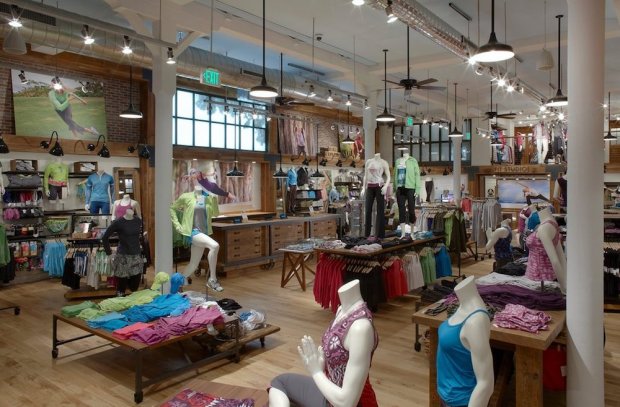Why The Gap Needs Athleta To Stay Fit

When Gap bought Athleta in 2008 for $150 million, the move didn’t cause much of a stir — beyond being considered a hedge play by the retailer against the exploding popularity of Canadian athleisure brand lululemon, which debuted its initial public offering (IPO) in 2007.
Athleta was founded by Scott Kerslake in the early 90s after a bike trip with female friends introduced him to a problem he had never considered in his work in information technology: Women’s athletic wear was a weak market, lacking in options that were both durable enough to workout in, and fashionable enough to be seen in public. By the time the brand had caught the Gap’s eye in 2008, the brand was shipping 21 million catalogs and bringing in $37 million worth of sales.
In the near decade that has passed since the acquisition, Athleta is far more than a clever hedge. While the brand’s Old Navy extension has performed more or less consistently well over the last decade — as it was well-positioned to catch the rising fast fashion wave of the 2010s — Gap’s eponymous brand and, to an even greater extent, its upmarket Banana Republic brand have struggled with sluggish sales, falling foot traffic and offerings that were continually out of step with its consumer base.
The situation at Gap has stabilized some, pushed by a solid holiday 2017 performance and expanding overseas sales growth. But the retailer is still starting 2018 with store closures, as the brand says it will be pruning its Banana Republic and Gap footprint by a dramatic 200 stores over the next three years. It plans to open about 270 Old Navy and Athleta stores during the same period.
By the numbers, Athleta has continued to be the brand’s success story, having notched double-digit sales growth in the last two years.
“We are very confident about the future runway in front of this business,” Gap CEO Arthur Peck noted in a call with investors.
A Wider Audience
Athleta’s growth can somewhat be attributed to changing trends: People are dressing down, which means selling well-made and stylish-looking leggings happens to be the new fad. The brand’s CEO, Nancy Green, noted in a conversation in mid-2017 that the Athleta brand has shown some restraint in an area where their competition (and parent firm) have allowed themselves to get a bit off-track.
“We’re not like, ‘Oh, it’s all about millennials.’ We aren’t chasing them,” she said.
Millennials buy plenty of Athleta gear, of course, but the brand focuses on the bigger picture: The retailer features models older than 30 in advertising, and its brand ambassadors aren’t a size 2. While a small switch to a more inclusive marketing strategy might not seem like a sea change, it’s almost unheard of in the fitness category — and it’s wildly effective. Athleta’s sales have grown in excess of 25 percent per year every year since 2012. The company’s on track to break the $1 billion mark in annual sales.
“We’re at an interesting cultural point where women are coming together and defending each other — politically, socially and in the workplace. The zeitgeist is moving where we’ve already been for 10 years,” noted Chief Marketing Officer Andréa Mallard in an interview regarding the brand’s compounding success.
Layered on that attitude of sisterhood is a fair amount of business-savvy: Athleta has expanded its target range to include children, with its line of clothes for girls. (Perhaps one might more accurately describe their focus as targeting Gen X and older millennial moms who buy clothes for their Athleta girls.)
“It’s doing really well,” Mallard admitted. “It grew out of demand from customers for ultra-high quality performance clothes that are also fun, beautiful and age-appropriate.”
The new category hit the market at exactly the moment Athleta’s rival in the athleisure market, lululemon, began scaling back its ivivva product line — its offering targeted at younger customers.
Athleta’s choice to branch out into children’s clothing is something of a risk, believe it or not. Although children are more active, they’re less interested in activewear as a category, and their parents are less interested in paying for high-priced play clothes for their kids. Target, for example, also has a line of athleisure clothing geared toward children that offers basic retail pricing that is 30 to 40 percent less expensive than the Athleta version.
But, Mallard noted, inclusiveness and wider offerings were the brand’s founding ideas, and while that has always been a risk in the fitness category — where the pitch tends toward the elite — it’s one that has not only pulled the brand forward, but also the parent company to which it is attached.
“We want to disabuse people of the idea that unless you’re a size 2 and 19 years old, you can’t be fit,” she concluded.
